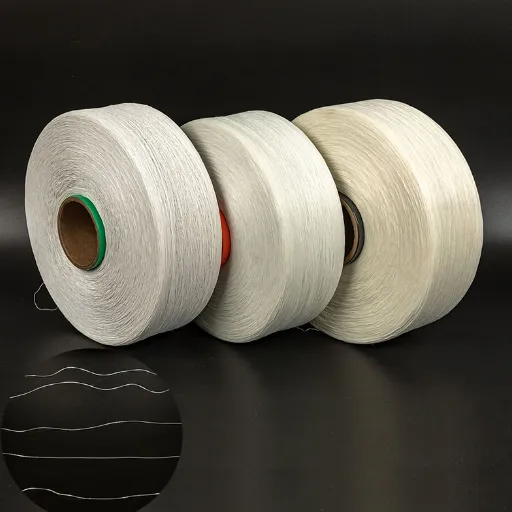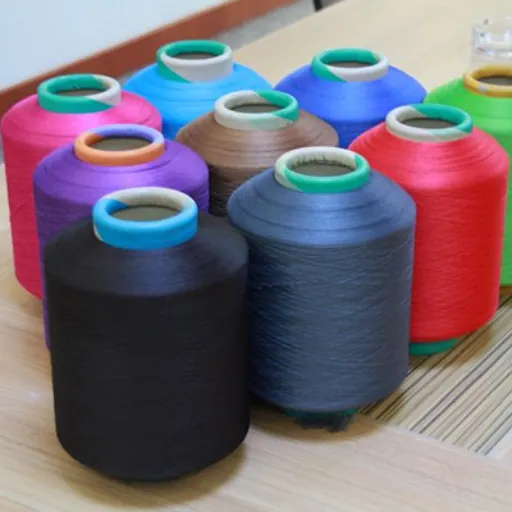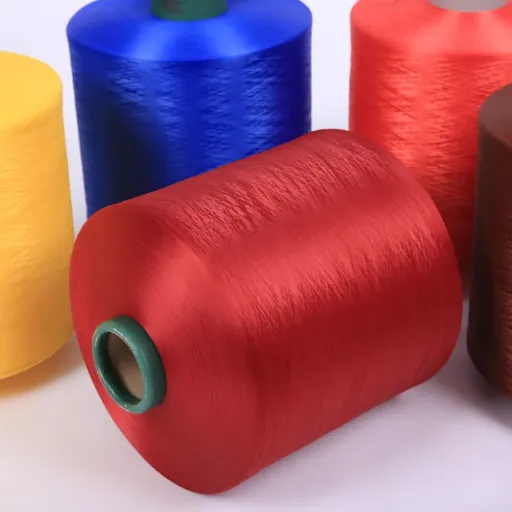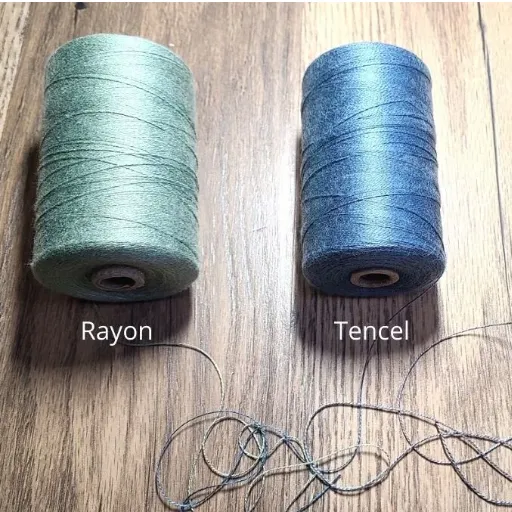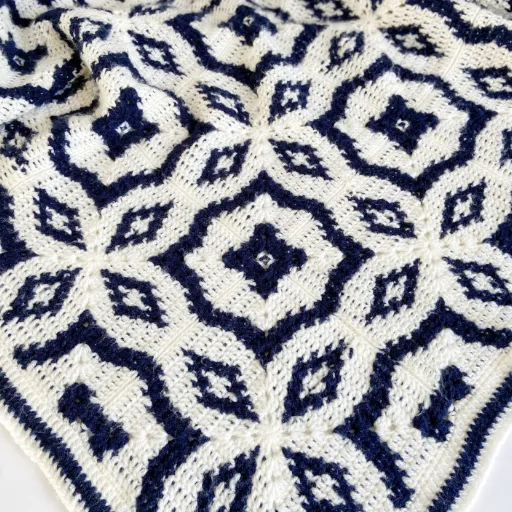The selection of the correct fabric can be pretty intimidating, particularly when one is presented with the vast number of choices that are available in the market today. Among these options, acrylic and polyester are usually the two most favored synthetic materials. But then again, what really differentiates them? If you are purchasing textiles for clothing, upholstery, or outdoor equipment, learning about the characteristics of these two fabrics will empower you to make well-informed choices. The present write-up thoroughly investigates the main features of acrylic and polyester, highlighting their specific properties, pros and cons, and applications. Ultimately, the reader will clearly understand which textile is more appropriate according to one’s taste and needs.
Composition and Manufacturing of Acrylic and Polyester
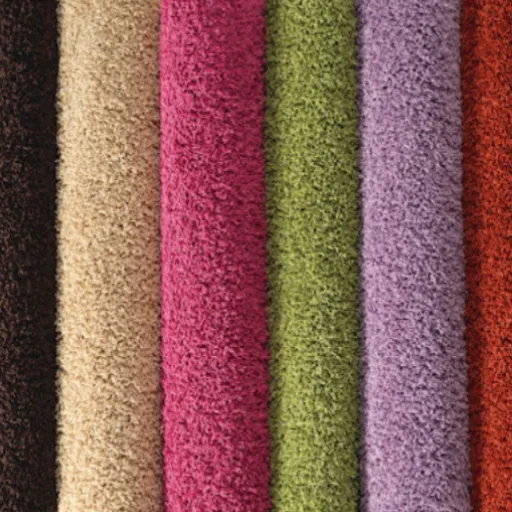
Acrylic is a synthetic fiber that comes from a polymer known as polyacrylonitrile. The whole process starts with the petrochemical industry, where acrylonitrile, the main ingredient, is derived, polymerized to form polyacrylonitrile, and finally converted to acrylic. This entire process is primarily done in filament form, which is then cut and spun to create yarns that mimic the texture of natural fibers like wool.
Polyester is a different story and refers to another synthetic material, which, however, still requires the same manufacturing process as polyester, except for the raw materials. The process involves melting the PET pellets and drawing them into fibers. In most cases, polyester is less expensive than other fabrics, leading to its more frequent usage and positioning it as one of the most recognized varieties of synthetic fibers in the industry.
Key Insight: Although both fibers are man-made, differences in their chemical makeup result in distinguishing features, such as the softness and warmth of acrylic and the strength and moisture resistance of polyester.
Acrylic: From Petrochemicals to Fabric
The textile industry makes extensive use of acrylic fabric because of its versatility and low cost. The fabric’s softness and lightness make it perfect for warm clothes such as sweaters, scarves, and gloves. Besides its long-lasting quality, the fabric’s resistance to water and solar radiation has made it a preferred material for awnings, patio furniture covers, and boat sails. Its ability to imitate the texture and look of natural wool at a lower price makes it even more attractive. Acrylic’s flexibility guarantees that its applications are not limited to fashion only, but also household and industrial uses.
Polyester: The Versatile Recycled Material
Polyester is a synthetic fiber that is very prevalent, primarily due to its qualities such as durability, versatility, and easy maintenance. One way polyester is produced is by recycling post-consumer plastic bottles, which is why it is called recycled polyester and has become very popular in the market. The eco-friendly polyester maintains the key properties of the virgin material, such as being wrinkle, shrinking, and stretching resistant, while also having a lesser environmental impact. Recycled polyester, by using plastic waste, cuts down the requirement for new petroleum, reduces carbon dioxide emissions, and participates in the fight against plastic pollution. It has a wide range of uses, from clothing and sportswear to household textiles, which is one reason it is considered a material that successfully balances functionality with sustainability.
Key Characteristics of Acrylic and Polyester Fabrics
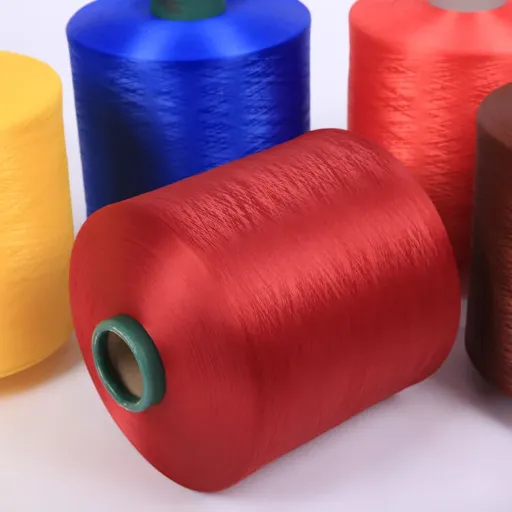
Lightweight, soft, and warm, acrylic fabrics are perfect for cold-weather clothing, such as sweaters, scarves, and gloves. They resist moths, mildew, and chemicals, which increases their lifespan. Moreover, acrylic fibers are recognized for imitating the feel of natural fibers like wool, providing the advantage of being cheaper and requiring less maintenance. However, due to their low breathability, their use is restricted in some climates or applications.
Polyester fabrics are very strong, resistant to creases, and quickly absorb moisture, making them suitable for various applications, from clothing to interior design. They keep their shape well, do not lose or gain size, and are straightforward to look after, needing only occasional ironing. Polyester is also a common factor in the creation of blended fabrics, where it serves to impart strength and durability. Although it is less breathable than natural fibers, polyester’s moisture-wicking properties and ability to take on various finishes have made it a favorite for sportswear and performance garments.
| Characteristic | Acrylic | Polyester |
|---|---|---|
| Texture | Soft, wool-like | Smooth, less prone to wrinkles |
| Insulation | High warmth retention | Moderate, moisture-wicking |
| Durability | Strong, prone to pilling | Very durable, resistant to pilling |
| Breathability | Low | Moderate with moisture-wicking |
| Maintenance | Requires gentle care | Easy to maintain, wrinkle-resistant |
Texture and Insulation: Acrylic vs Polyester
If you consider acrylic and polyester in terms of texture and insulation, each material has distinct advantages that help in certain areas. Acrylic is appreciated for its soft, wool-like texture and is often used as a warm, comfortable option in the making of sweaters, blankets, and cold-weather accessories. It has a very high insulation power comparable to that of nature’s wool, providing the user with substantial warmth even in very frigid conditions. However, over time, it may pill, which affects its life span.
Polyester, conversely, has a smoother texture, making it less prone to wrinkling and more likely to take on the shape of the object it covers, while also being durable. Although it does not provide the same degree of warmth as acrylic, the moisture-wicking feature and the breathable nature of polyester make it suitable for sportswear and layering. It is not prone to pilling and, in fact, performs best in situations where durability and resistance to wear are priorities.
Durability and Maintenance of Acrylic and Polyester
In terms of lastingness, both acrylic and polyester are strong contenders, but they are distinguished by their advantages in different aspects. Acrylic is known for its toughness and can withstand bad weather, making it widely used in products like outdoor furniture and winter clothes. On the downside, acrylic tends to develop pilling and gradually loses stiffness with time and heavy use, so it requires gentle care during washing and storage. It is advisable to hand-wash or use delicate machine cycles to keep its quality.
In contrast, polyester is a perfect example of a long-lasting material that can withstand rigorous use and still come out strong. It retains its original form nicely and is not as prone to getting pilled as acrylic. Besides, polyester is quite wrinkle-resistant, stain-resistant, and unshrinkable, hence it is perfect for daily use and easy to maintain. Polyester products can usually go through regular machine washing and drying without any damage, thus enhancing their practicality for users.
Common Applications of Acrylic and Polyester Fabrics
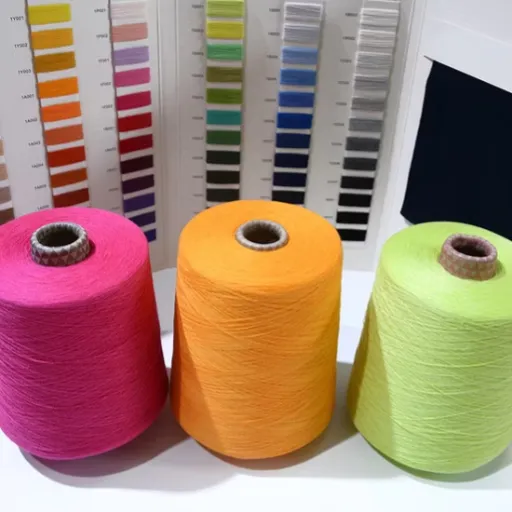
The softness and warmth of acrylic fabrics are the main reasons why they are the first choice for the production of knitted clothing such as sweaters, socks, and gloves. Their lightweight and weather-resistant properties also make them suitable for the home furnishing sector, where they are used in blankets, upholstery, and outdoor furniture covers. On the other hand, polyester fabrics are used in activewear, outerwear, and everyday clothing because they are durable, moisture-wicking, and easy to care for. In fact, polyester is a major player in home textiles, as curtains, bed linen, and cushion covers are also made from it. Its industrial applications include conveyor belts and ropes, which are also areas of use for this versatile material.
Acrylic in Sweaters, Scarves, and Home Textiles
Acrylic fibers have many advantageous features like warmth, softness, and lightness that make them the first choice in the production of cold-weather clothing like sweaters, scarves, and so on. They are often called a synthetic alternative to wool, offering a similar texture and insulation, but at a lower price and with easier maintenance. In addition to that, acrylic is resistant to shrinking and creasing, which helps to keep the garments in good shape and prolongs their life. Acrylic is used not only in the apparel industry but also in the production of home textiles, like blankets, throws, and upholstery fabrics, where its long-lasting nature and excellent color retention are highly appreciated. Its wide-ranging applications make acrylic fibers indispensable in both the fashion and home decor sectors, where the need for affordable yet trustworthy materials is met.
Polyester in Activewear and Outdoor Gear
Polyester has emerged as a top choice in sports and outdoor gear thanks to its remarkable qualities that match the needs of both performance and durability. This man-made fiber is light, moisture-wicking, and fast-drying, making it perfect for very active people and various environmental conditions. Moreover, the durability of polyester and its ability to resist wear make it possible for the clothes and gear to last longer, even with heavy use. Various fabric technologies have been used to enhance polyester, such as applying antimicrobial treatments to inhibit odor or mixing polyester with elastic fibers like spandex for better comfort and mobility. Its easy-care lifestyle and ability to maintain shape and color even after countless washes make polyester an essential material in the activewear and outdoor sectors.
Maintenance Tips for Acrylic and Polyester Fabrics
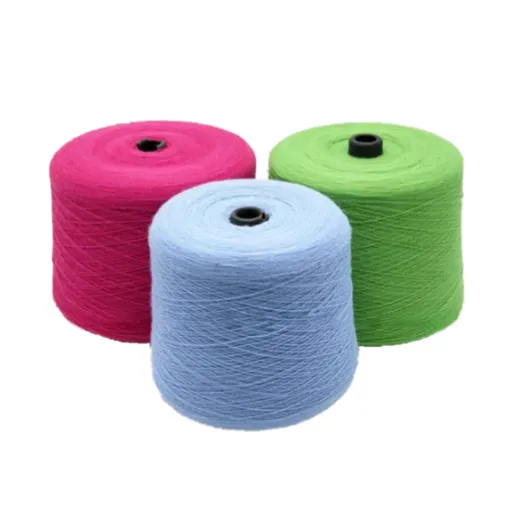
Acrylic and polyester fabrics are very well-maintained if you follow the care instructions provided on the label. For both materials, using cold or warm water, a gentle cycle, and machine washing are generally recommended methods that do not cause damage. It is recommended to use a mild detergent and to avoid bleach, as it may damage the fibers or cause discoloration. For filthy items, it is advisable to use a stain remover designed for synthetic fabrics to pre-treat the stained area before washing it.
Washing and Drying Guidelines for Acrylic
Acrylic fabrics need to be carefully washed at all times to maintain their durability and appearance. For the machine wash, a gentle cycle is recommended with warm or cool water to prevent stretching or damage to fibers. Mild detergent is recommended because it will protect the material’s integrity. Do not use fabric softeners excessively, as that may render acrylic fibers sticky, causing them to lose their softness. After washing, air-drying is preferred to preserve the fabric’s shape. If you must dry in a dryer, use low heat or a delicate setting to avoid excessive heat exposure, as this can weaken the fibers or lead to shrinkage. Do not wring out your acrylic items as this can distort their shape. Careful handling will allow acrylic fabrics to remain in good condition for a longer time.
Care Instructions for Polyester Fabrics
Polyester materials are known for their strength and ability to resist creasing, which is why they are widely used in clothing and home textiles. Machine—wash polyester items in warm water with a mild detergent for proper care. Hot water should be avoided since it may cause the fibers to break down or become weaker over time. If it is necessary to tumble dry, use a low-heat setting to prevent shrinkage or heat damage. Polyester fabrics usually dry pretty fast, so air-drying is also a great option to maintain the fabric’s quality and shape. To get rid of creases, you can apply a low to medium heat setting on an iron, using a pressing cloth to keep the fabric from coming in direct contact with the iron. Always read the specific care label on the garment to get the best results in preserving its condition and longevity.
Environmental Impact of Acrylic and Polyester
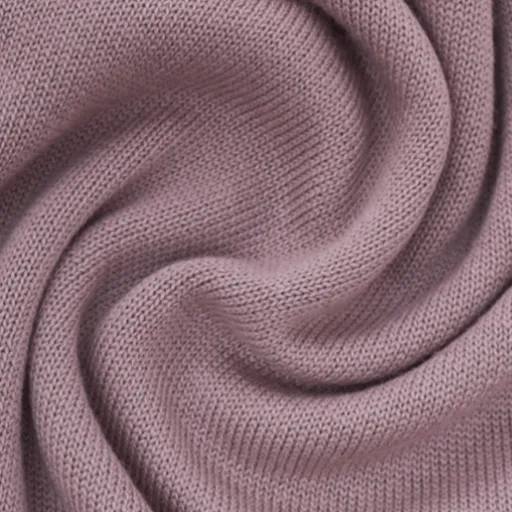
Both acrylic and polyester are man-made materials, which are not living, and their production requires fossil fuels; thus, they both have significant adverse environmental effects. The process to manufacture acrylic involves using hazardous chemicals, which, if not handled properly, can severely affect the environment. Besides, the product is non-biodegradable; therefore, it will be a constant contributor to the long-term waste problem of dumpsites. On the other hand, polyester is made from oil, a non-renewable resource, and its production consumes a tremendous amount of energy. The washing of both fabrics releases microplastic particles, which enter the water systems, resulting in water pollution and the death of marine creatures. Nonetheless, opting for recycled versions of these fibers or simply reducing your use of them can lessen their environmental impact.
Acrylic: Fossil Fuels and Hazardous Production
Acrylic fiber, an artificial substance, is another synthetic material that greatly depends on fossil fuels for its manufacture. Basically, it comes from acrylonitrile, a compound produced via petroleum-based chemicals; its production is highly energy-consuming and extremely harmful to nature. During the manufacture of acrylic, besides the non-consumptive use of other resources, there are contaminations such as VOCs and CO2, which in turn lead to decreased air quality and global warming. Moreover, acrylonitrile is believed to be a carcinogenic agent, posing a danger to both the laborers and the population living near the production areas. One way to mitigate the environmental impact of acrylic is by exploring sustainable alternatives, increasing the recycling of synthetic fibers, or transitioning to more eco-friendly materials like organic or biodegradable fibers.
Polyester: Carbon Footprint and Recycling Challenges
Polyester is still a major player among synthetic fibers in the textile industry, but it is facing severe environmental issues. The poly fiber’s creation process is highly power-consuming and primarily relies on fossil fuels, which accelerates the release of carbon dioxide, a significant greenhouse gas. Recently, figures reported that 37% of the total fiber production worldwide is linked to the production of polyester. As the demand for it rises, its carbon footprint continues to grow. No matter how far recycling technology has come, only 15% of polyester is recycled globally, while a large portion still ends up in landfills, where it will pollute for a long time. Recent studies advocate for the community to focus on closed-loop recycling systems, where polyester is reused without losing its quality, ultimately reducing pollution. Even so, this method will require significant financial aid and international teamwork to make it happen.
Sustainability Note: The Rise of Recycled Polyester
During the investigation into the increase in recycled polyester, I have come across an essential point: it is a significant cause of ecosystem depletion. The world can take a step further in the direction of sustainability by choosing textiles or other products that are made from recycled materials. But on the other hand, I still realize that the whole process needs to be supported by both consumer awareness and industry-wide transformation.
Reference Sources
Here are five professional and authoritative reference sources that you can use to verify the correctness of your article on the differences between acrylic and polyester:
- Research and Prospect of Acrylic Polyester Resin Synthesis Process
This paper, published by the American Chemical Society (ACS), examines the synthesis processes of acrylic and polyester resins from an academic viewpoint and gives a comprehensive discussion. - Synthetic Fibres: Nylon, Polyester, Acrylic, Polyolefin
A wide-ranging book accessible through Google Books traces the history, properties, and uses of synthetic fibers, including acrylic and polyester. - Evaluation of the Effect of the Addition of Polyester Fiber on Some Mechanical Properties of Heat-Cure Acrylic Resin
This article, printed in the Journal of Baghdad College of Dentistry, deals with the reinforcement of acrylic resin using polyester fibers and the mechanical properties of the composite material. - Recent Advancements in Acrylic Fabric Applications: A Comprehensive Review and Future Trends
A review published by MDPI highlights advances in acrylic fabric applications and compares them with other synthetic fibers, such as polyester. - Polyester: A Cultural History
An article by Taylor & Francis explores the cultural and historical aspects of polyester, comparing it to other synthetic fibers, such as acrylic.
Frequently Asked Questions (FAQs)
What are the key differences between acrylic and polyester?
The key differences between acrylic and polyester lie in their composition and properties. Acrylic is made from synthetic materials, while polyester is made from polyethylene terephthalate, a type of plastic. Acrylic is softer and often used for its warmth, whereas polyester is more durable and resistant to wear and tear. This makes polyester ideal for outdoor clothing and applications requiring durability.
Is acrylic yarn better than polyester yarn?
Acrylic yarn offers softness and warmth, making it a popular choice for knitters and crocheters. However, polyester yarn is known for its durability and resistance to fading and stretching. Depending on the project, one may choose between acrylic and polyester yarn based on the desired texture and strength.
Can I use acrylic for outdoor clothing?
Acrylic can be used for outdoor clothing, but polyester is often considered a better choice due to its ability to withstand wear and tear and resist moisture. Polyester fibers are designed to perform well in various weather conditions, making them ideal for outdoor use.
What is acrylic made from?
Acrylic is made from synthetic fibers derived from acrylic acid. This composition gives acrylic its soft texture and warmth, which is particularly appealing for garments and accessories. In contrast, polyester is made from polyethylene terephthalate, which contributes to its durability.
How do the properties of polyester compare to acrylic?
Polyester is generally more durable and resistant to wrinkles and stretching compared to acrylic. It also has better moisture-wicking properties, making it suitable for athletic wear. Acrylic, while softer, may not retain its shape as well as polyester, especially after repeated washings.
What are the environmental concerns regarding polyester production?
Polyester production raises several environmental concerns, including the use of non-renewable resources and the generation of plastic waste. Since polyester is a synthetic fabric made from petroleum products, its production contributes to environmental pollution. In contrast, natural fibers like cotton have a lesser impact, although they also come with their own concerns.
Should I choose acrylic over polyester for my project?
The decision to choose acrylic over polyester depends on the specific needs of your project. If you prioritize softness and warmth, acrylic may be the better option. However, if durability and resistance to environmental factors are more critical, then polyester would be the preferred choice.
What are some common uses of polyester?
Polyester is often used in a variety of applications, including clothing, upholstery, and outdoor gear. Its durability and resistance to UV rays make it an ideal choice for outdoor use, while its ability to retain moisture ensures comfort in activewear.
How does acrylic compare to natural fibers like cotton?
Acrylic is a synthetic alternative to natural fibers like cotton and wool. While acrylic may mimic the softness of these natural fibers, it does not breathe as well and may retain moisture, leading to discomfort. Natural fibers, on the other hand, are more breathable and absorb moisture, making them suitable for warmer climates.










